If you wanted to explore new, intelligent avenues to think about food this year, you might have rushed to Milan to visit the world expo. The event, which proposed to explore the theme ‘feeding the planet, energy for life,’ turned out to be some kind of extravagant food Olympics. I didn’t go. Reports from disgruntled visitors and less than laudatory newspaper reviews made me keep my distances. Rumors started before the opening of the event when environmentalist protesters took to the streets to accuse the expo of being little more than a capitalist symbol of mass waste. After the event opened, the press kept on writing about cost overruns, corruption scandals, underpaid workers, ostentatious architecture, etc. To add insult to injury, bastions of health and food disinformation such as McDonald’s, Coca-Cola, Ferrero planted their pavilions right in the middle of the expo.
I could go on and on. I’d rather dedicate my energy to a review of Age of Wonderland, a festival set up by Dutch organization for development Hivos, platform for future thinking Baltan Laboratories and the Dutch Design Week. The programme of the Age of Wonderland looked at ‘Balancing Green and Fair Food’, interrogating the sustainability of our food systems, looking at how they interconnect with the environment and searching for alternatives to feed communities. Basically doing the job that the Expo Milan was supposed to do but with less fanfare and more sense.
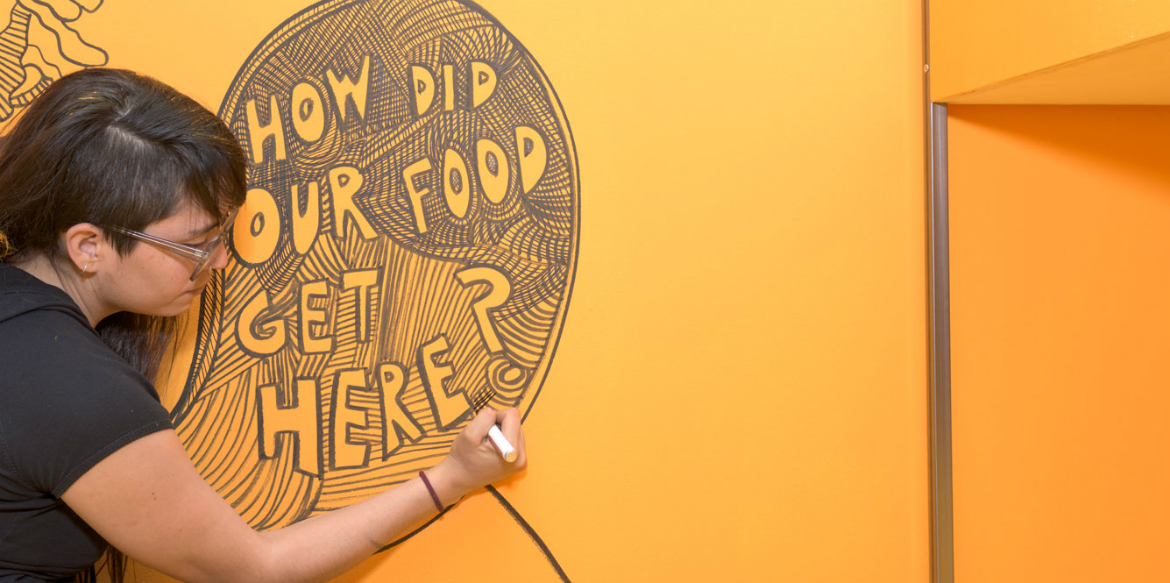
Sari Dennise. Photocredits: Sas Schilten, via Hivos
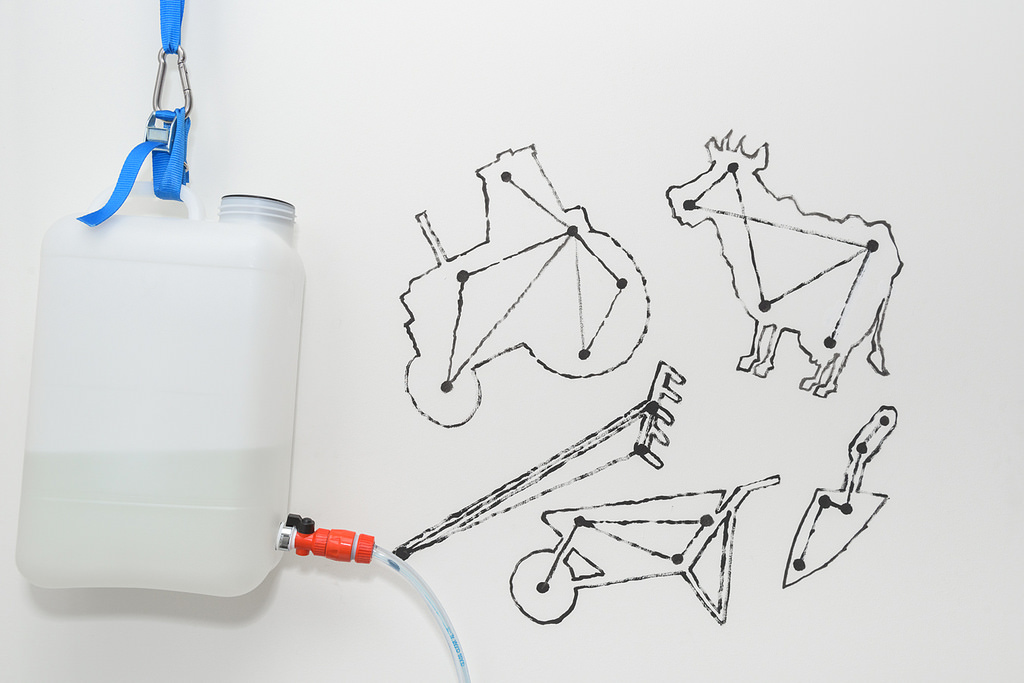
Photo Sas Schilten for Baltan Laboratories
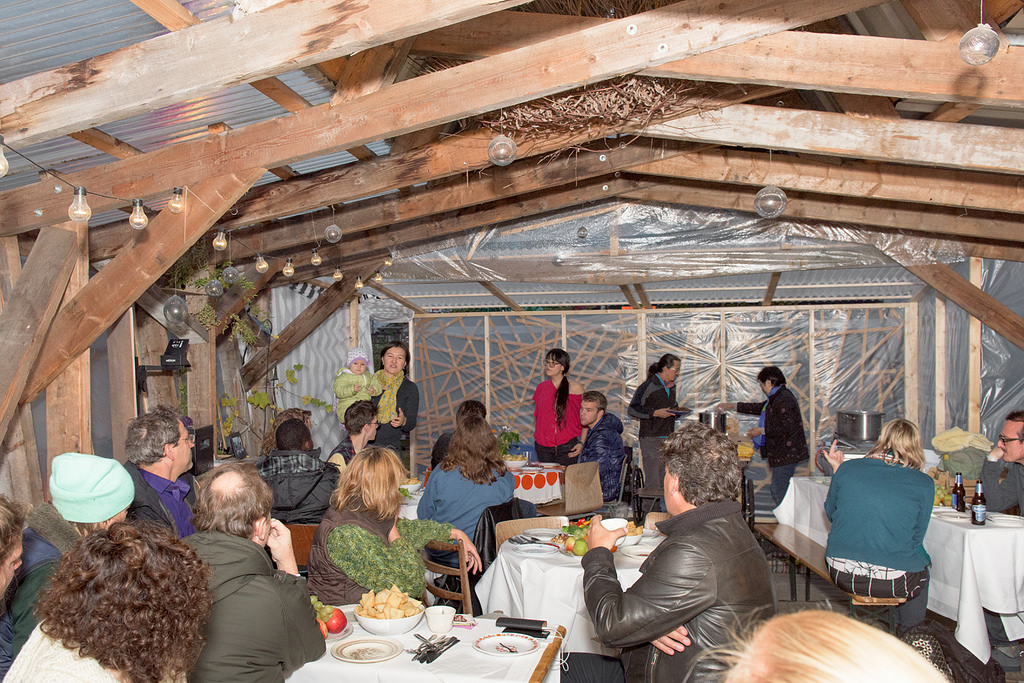
Toi Dinner Hack with Symbat Satybaldieva. Photo Sas Schilten for Baltan Laboratories
The strength of Age of Wonderland was its format. Instead of setting up the kind of show where artworks are shipped from abroad, unpacked, exhibited, repacked and sent back, the event took the form of a social innovation program. Six creatives from Kyrgyzstan, Indonesia, Mexico and Tanzania were invited to spend several weeks in Eindhoven to develop innovative projects and discuss their ideas with Dutch artists and companies. The broader public had then a full week to visit the show and join the conversation during workshops, tours, meals, artists presentations and seminars.
The result of these experiments are not artworks that denounce, shock and speculate on our globalized food systems but quiet and interdisciplinary projects that have the potential to have tangible impact on the life of communities. Each of these projects propose a direct solution to a peculiar issue related to food, in particular soil, water, rice, compost, resilience, plastic and abundance. Some will be developed locally only, others will hopefully inspire other communities and be adopted elsewhere in the world.
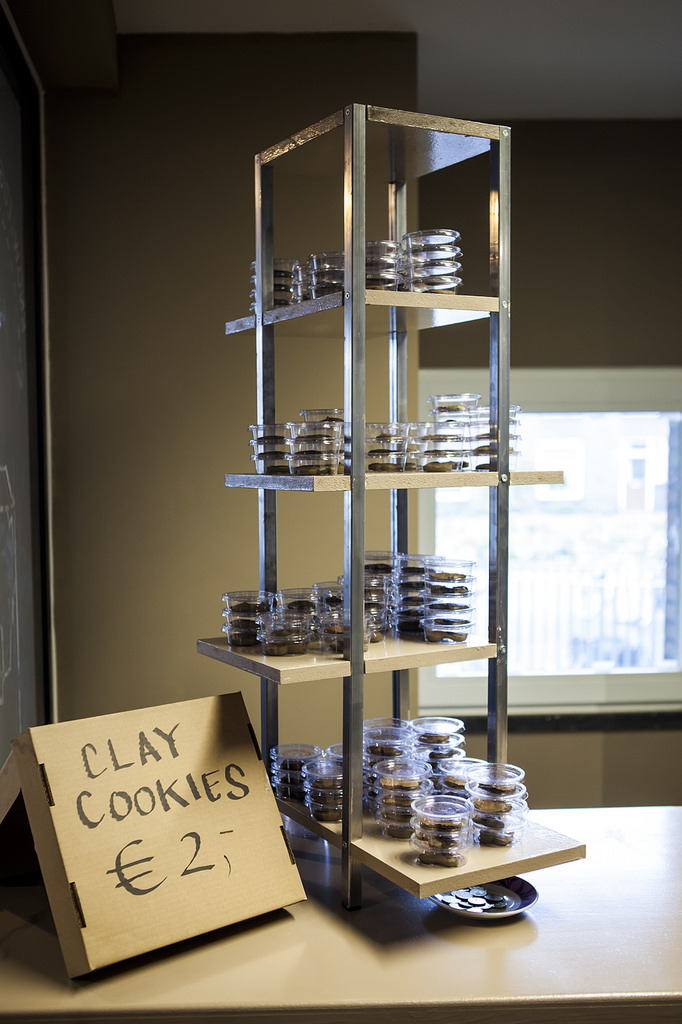
Arie Syarifuddin, Claynialism. Photo by Hanneke Wetzer for Baltan Laboratories
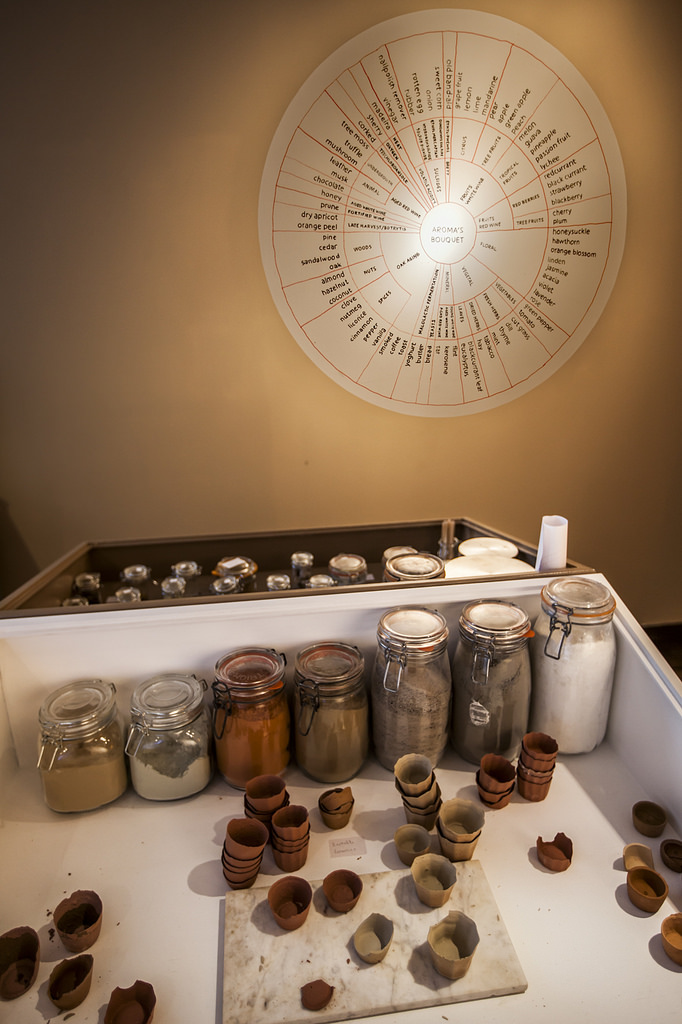
Arie Syarifuddin, Claynialism. Photo by Hanneke Wetzer for Baltan Laboratories
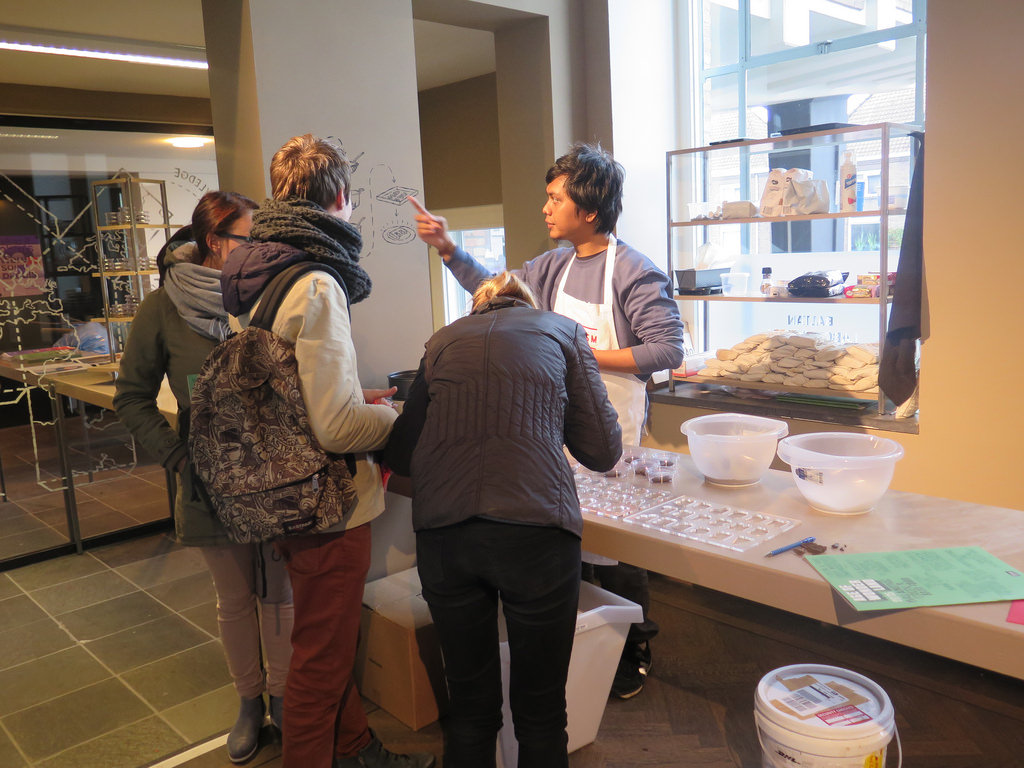
Arie Syarifuddin was inviting visitors to taste the clay cookies he had made. Made of eggs, sugar, clay and water, the tiny biscuits were actually very good.
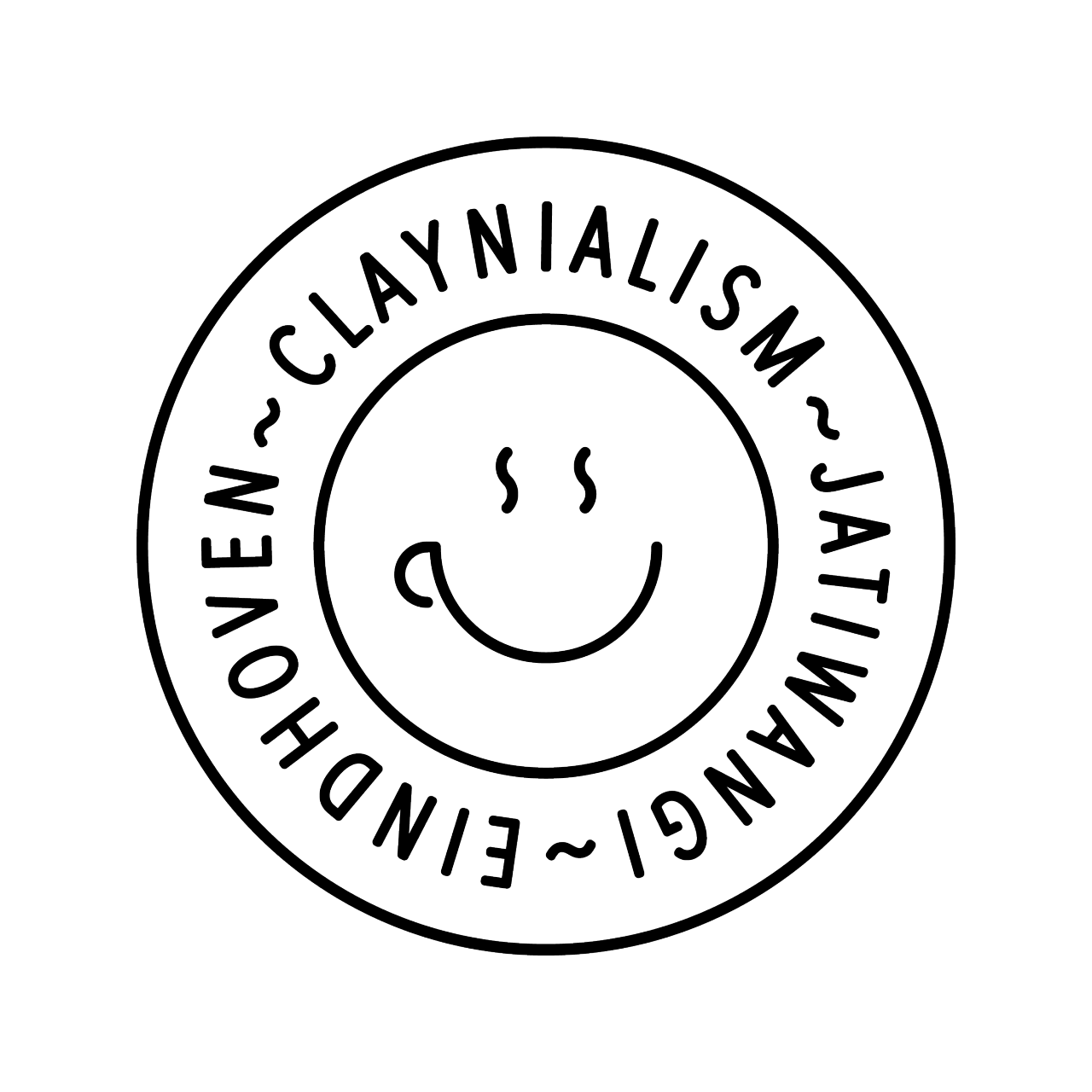
Arie Syarifuddin, Claynialism
One of the most charming and astute projects for me was the one of Arie Syarifuddin, from the Jatiwangi Art Factory in the city of Jatiwangi in West Java, Indonesia. His project Claynialism aimed to use the humble and readily available clay found in the soil of his home town to realize nutritious and delicious food products.
Together with designer Lonny van Ryswick and artist Masha Ru, Arie experimented with various types of edible clay and classified them according to their taste and material qualities. The goal was to explore clay as both a cooking ingredient and a material that can be used to make objects that can be eaten instead of being discarded. They made tea cup. You can pour liquid inside it and when you’re done, you simply eat the clay cup.
The project also aimed to give the clay some dignity. By making us eat something we associate with dirt, the artist invites us to (re)connect with our soils.
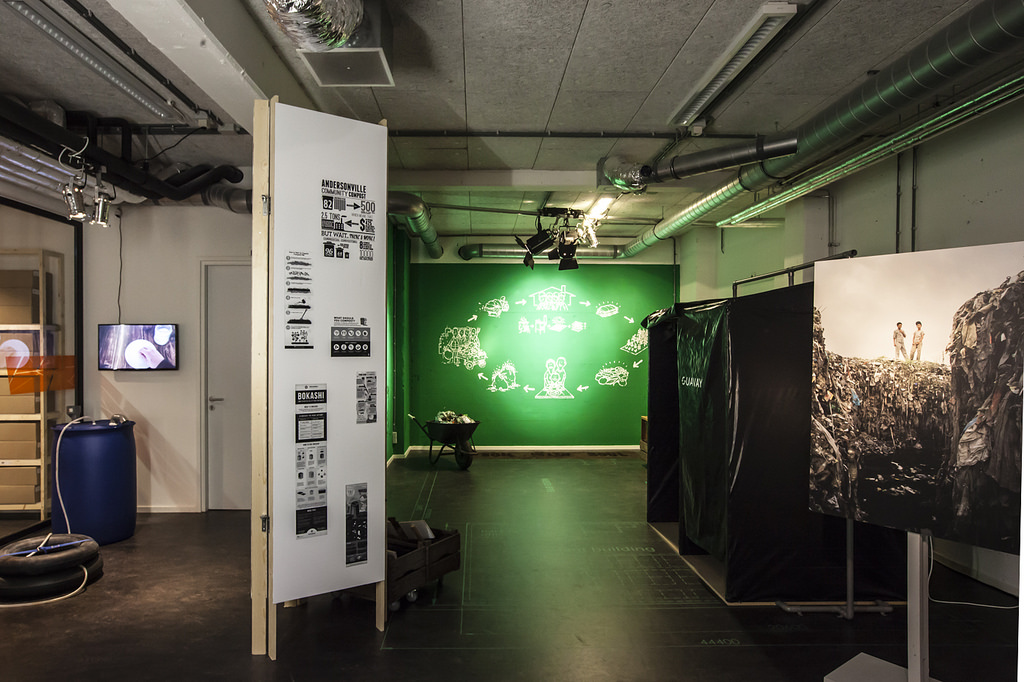
Ahadi Katera, Guavay. Photo by Hanneke Wetzer for Baltan Laboratories
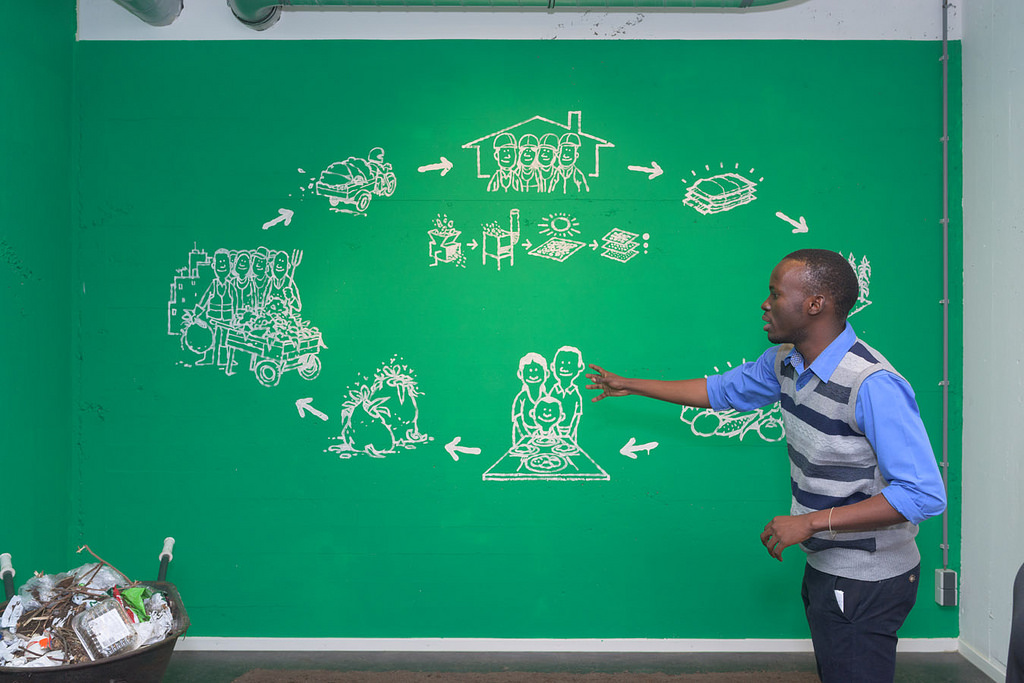
Ahadi Katera, Guavay. Photocredits: Sas Schilten
Ahadi Katera found out that in various neighbourhoods of the city where he is living, Dar es Salaam (Tanzania), 40% of the waste from households and food markets consists of organic waste. And because recycling is not yet fully implemented in the country, most of this organic waste ends up on landfill. Meanwhile, a few kilometres away, farmers need additives and nutrients to prepare the soil and grow new crops. The young engineer turned this abundance of waste into a social enterprise that collects organic waste and makes fertilizer through a process that combines fermentation and composting.
During his visit in the Netherlands, he started to research how organic waste could also be used in the fabrication of products as diverse as dishwashing liquid and organic leather bags.
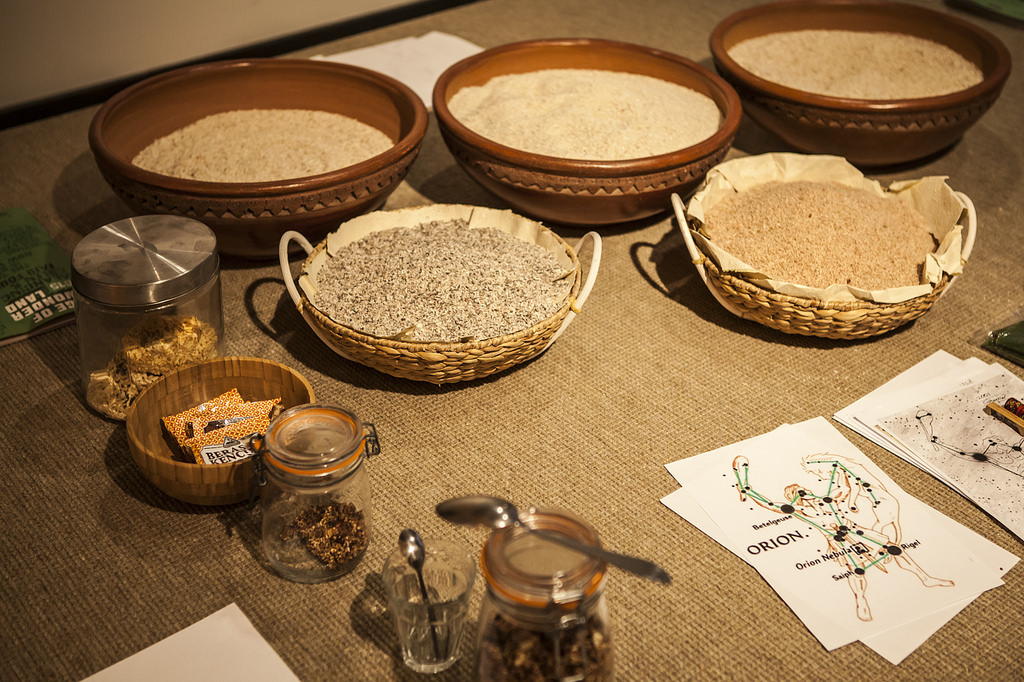
Yoyo Yogasmana. Photo by Hanneke Wetzer for Baltan Laboratories
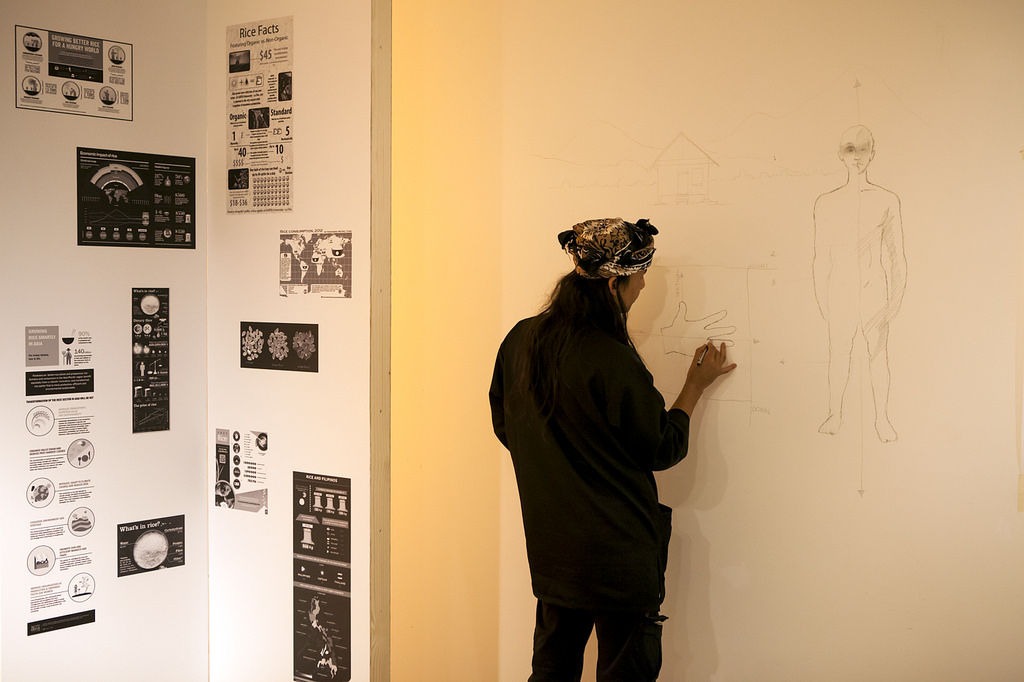
Yoyo Yogasmana. Photo by Hanneke Wetzer for Baltan Laboratories
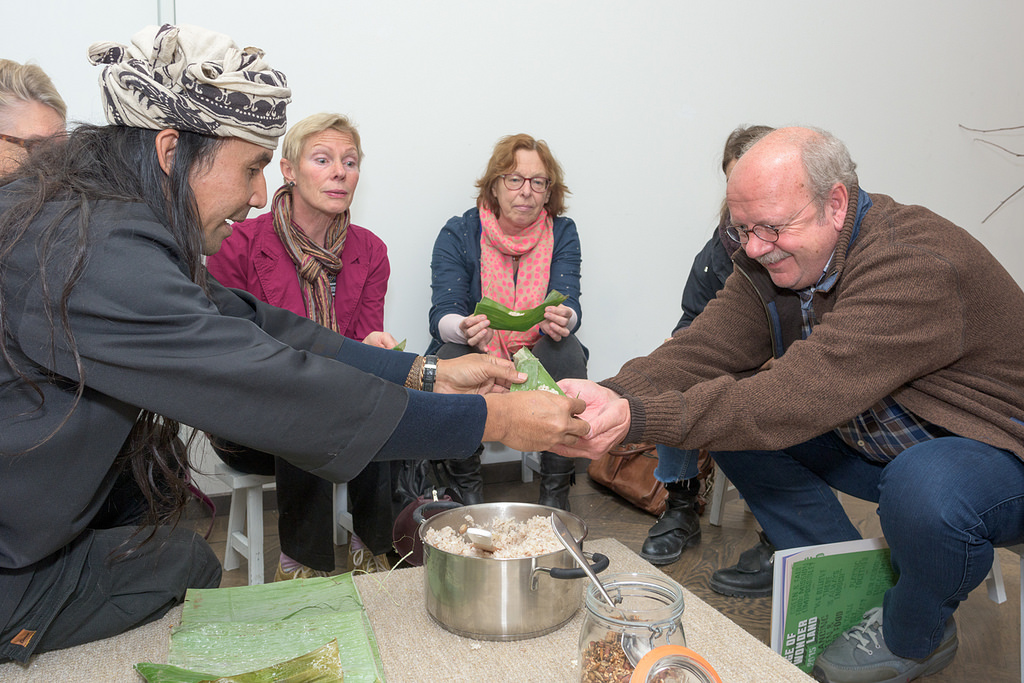
Yoyo Yogasmana. Photocredits: Sas Schilten
The star of the festival was without doubt Yoyo Yogasmana, an artist but also a personal advisor to the king and queen of the Ciptagelar Kasepuhan community who lives in the Western Java Mountain.
In Yoyo’s community, rice is venerated for its power to give life. In fact, rice is so sacred, it has its own ceremonies, is cultivated and harvested only by hand and can never be sold. So each day, at lunch time, Yoyo cooked for visitors a rice meal so delicious and filling a word should be invented to describe that type of rice. He also presented in details his community’s ancestral and ecologically sound traditions in food production and consumption.
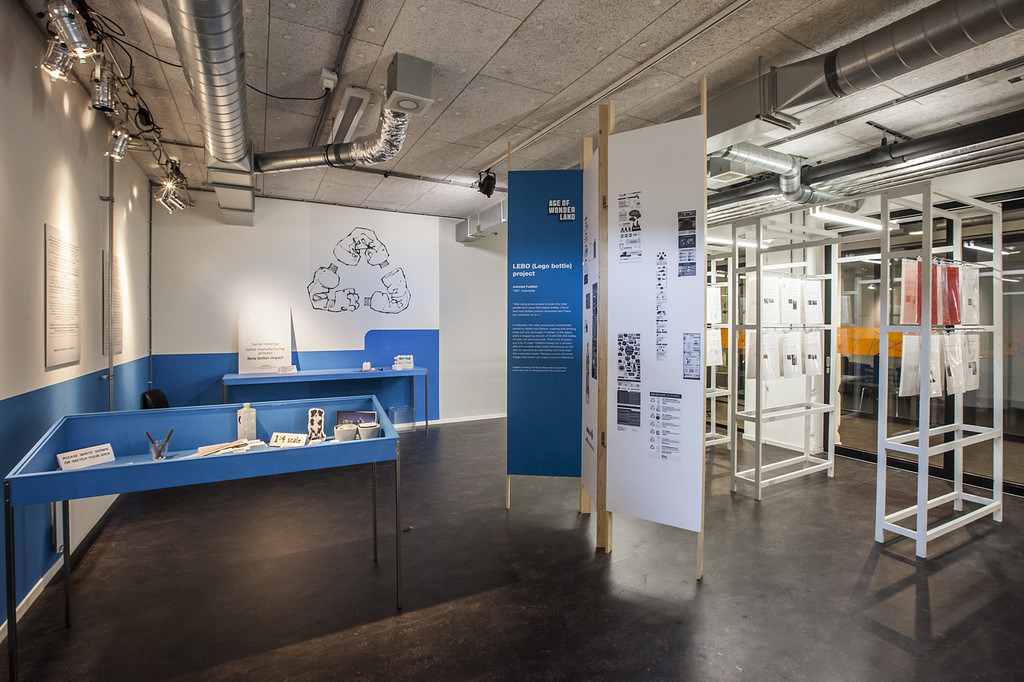
Achmad Fadillah. Photo by Hanneke Wetzer for Baltan Laboratories
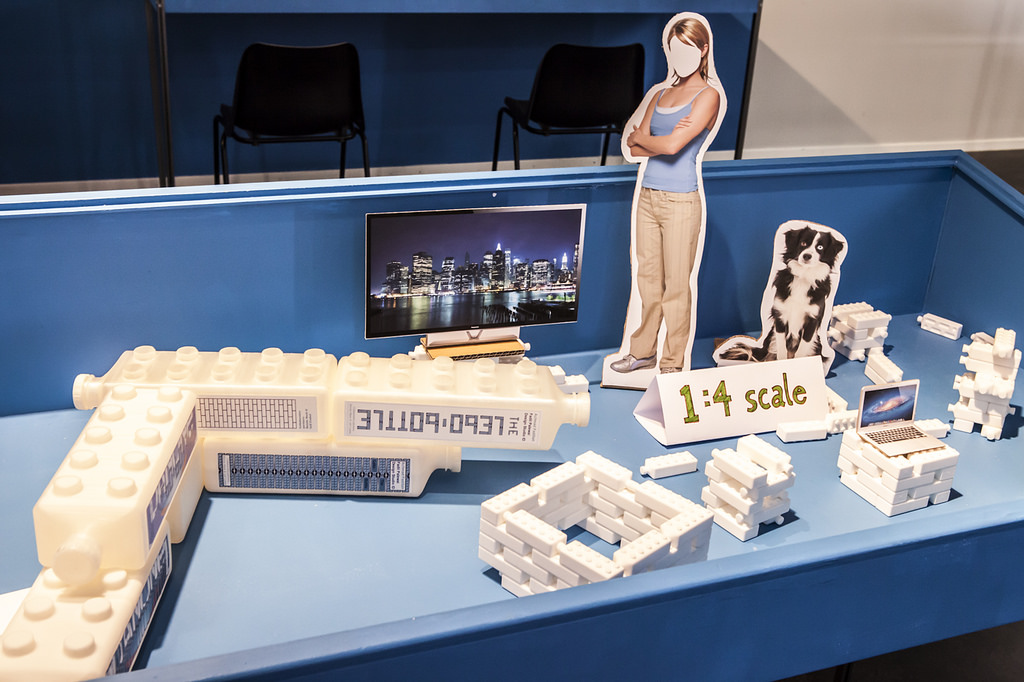
Achmad Fadillah, 1:4 scale 3d printed mockups of the bottles. Photo by Hanneke Wetzer for Baltan Laboratories
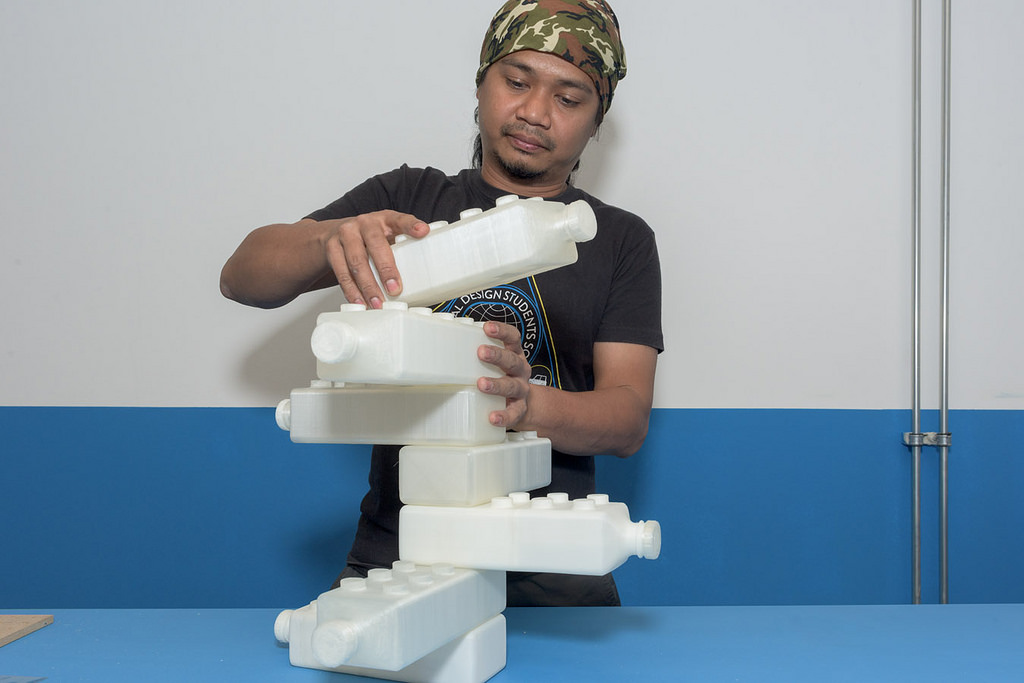
Achmad Fadillah. Photo Sas Schilten for Baltan Laboratories
I was surprised by the text that introduced Achmad Fadillah‘s work. It said that:
In Indonesia, the water sources are commercially owned by Nestlé and Danone. People have no clean tap drink water available and drinking water can only be bought in bottles. In this region alone, 25.000.000.000 plastic bottles of water are bought every year. Most are not recycled and are contributing to the growing pollution of soil and water.
The designer developed a prototype of connectable and reusable water bottle that can be used as a toy or a construction element like a brick. By stacking and connecting together the bottle-bricks, you could build sturdy pieces of furniture or even bridges or refugee dwellings.

Sari Dennise. Photo by Hanneke Wetzer for Baltan Laboratories
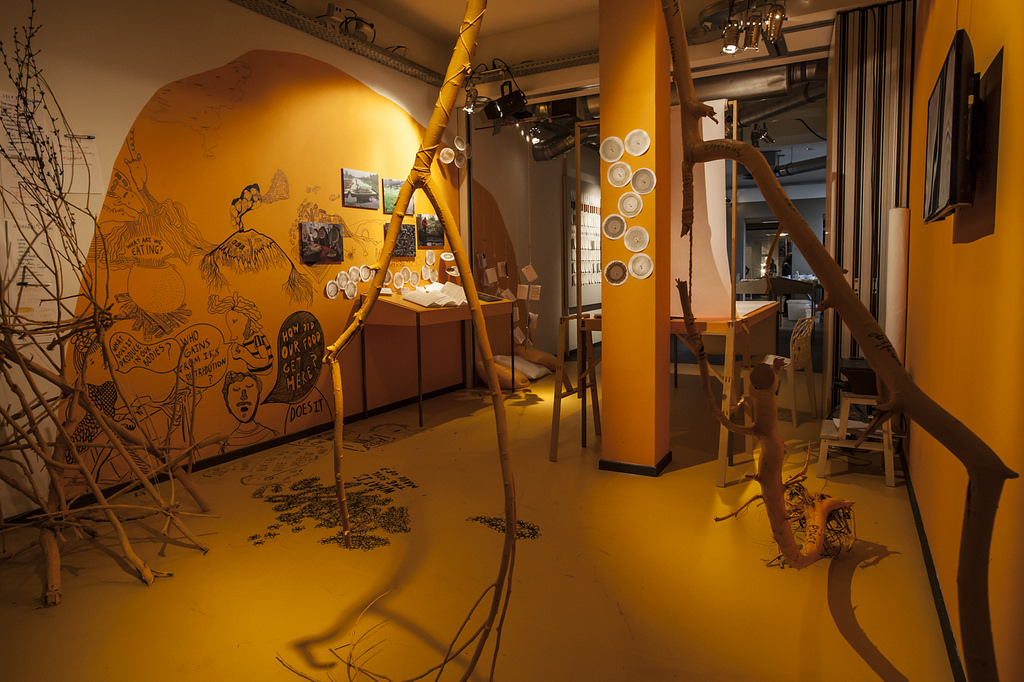
Sari Dennise. Photo by Hanneke Wetzer for Baltan Laboratories
Designer and social activist Sari Dennise, from the Cráter Invertido collective, is looking for ways to help Chinamperos (Farmers in the southern part of Mexico City) sell and distribute their agricultural production in a fairest-local way. She used her stay in The Netherlands to research food distribution systems that offer “alternatives” to the supermarket and could thus reduce the consumption chain and benefit local communities of producers and consumers more directly: community supported agriculture, food networks, independent local shops, etc.
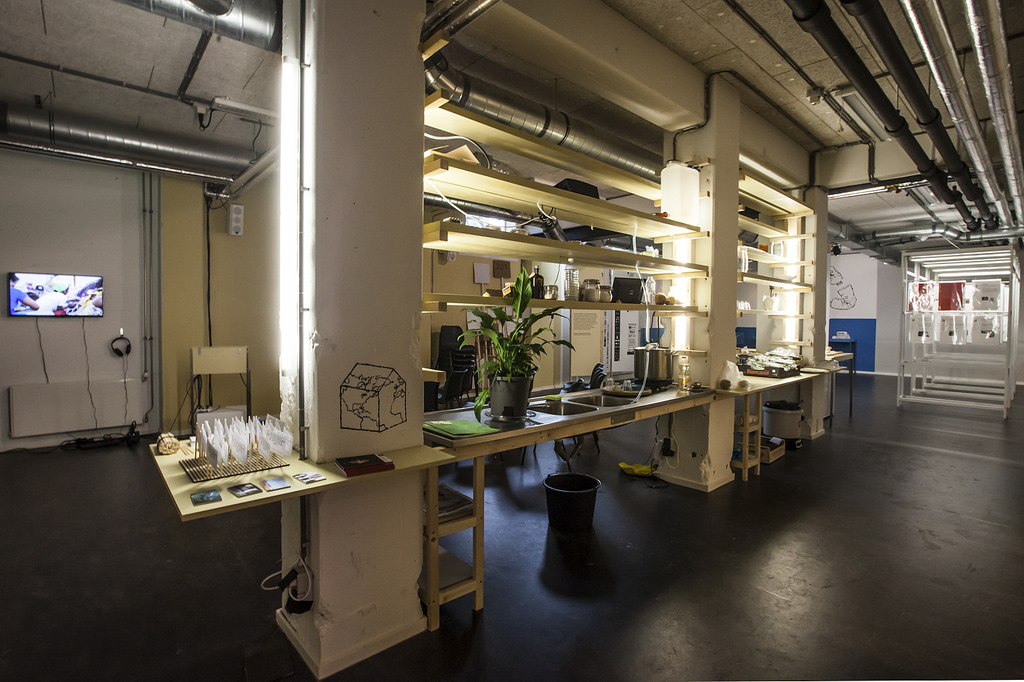
Symbat Satybaldieva. Photo by Hanneke Wetzer for Baltan Laboratories
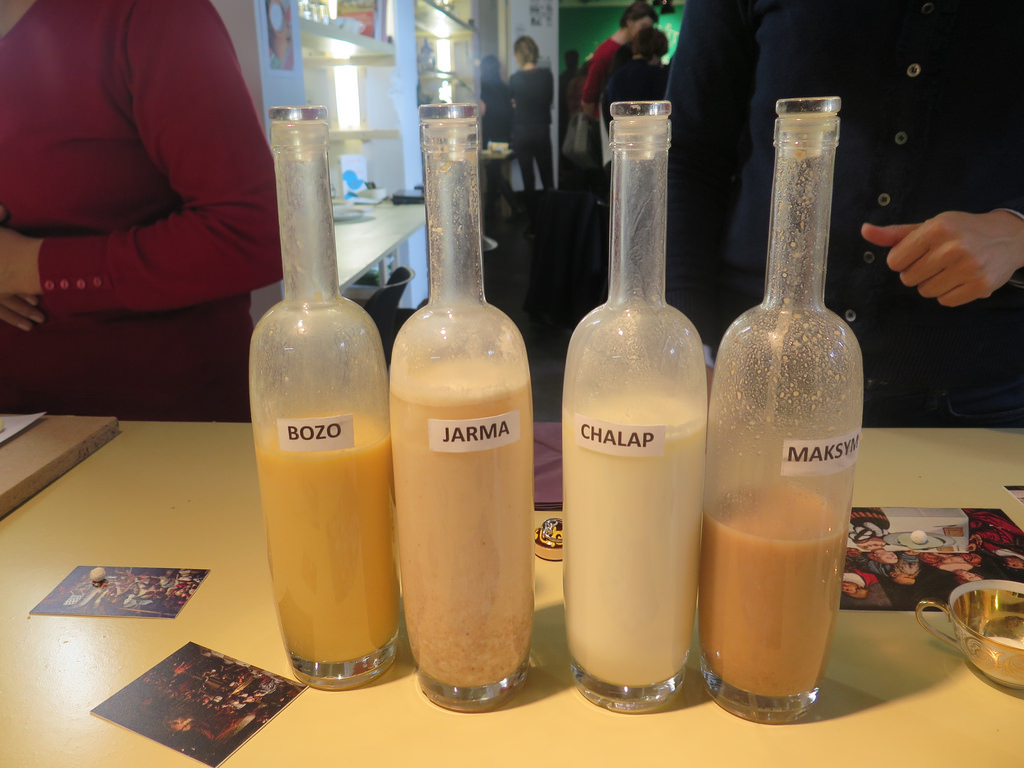
Symbat Satybaldieva, Fermented drinks from Kyrgyzstan
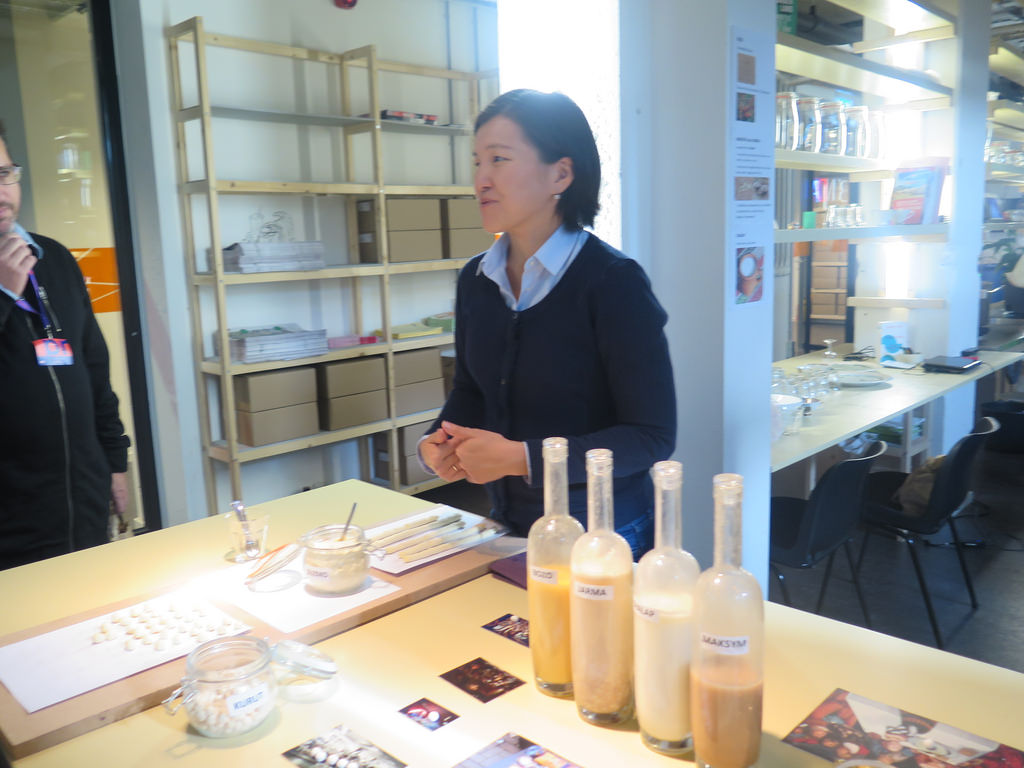
Symbat Satybaldieva presenting her (very potent) fermented drinks from Kyrgyzstan
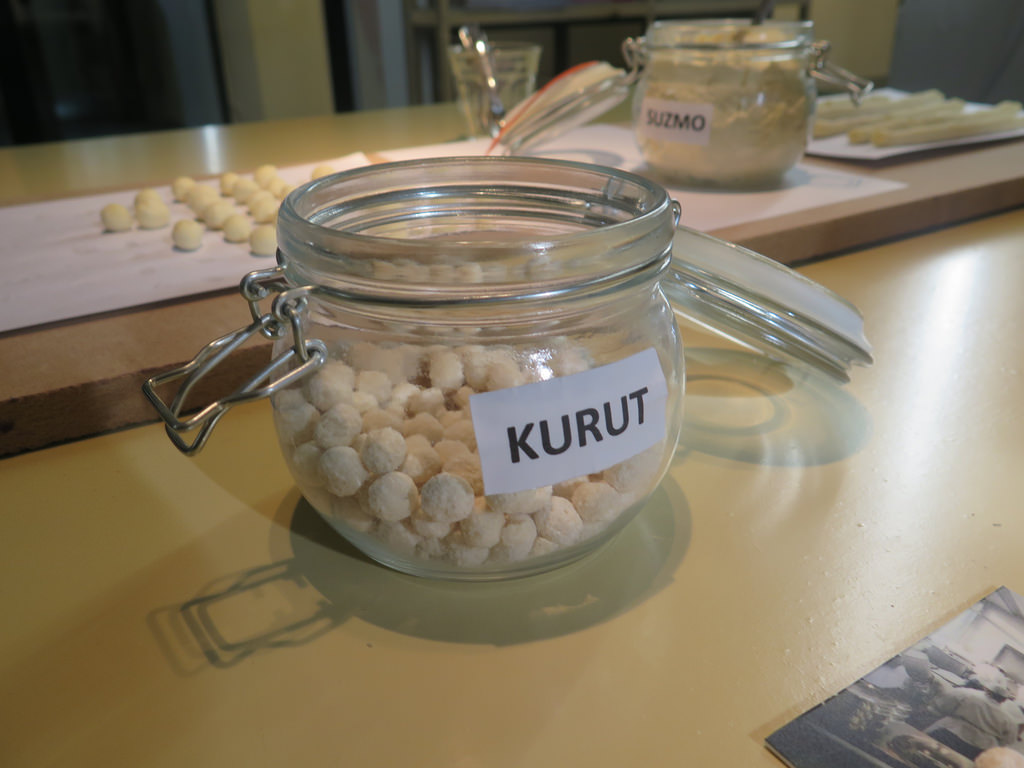
Symbat Satybaldieva, kurut, dried yogurt balls from Kyrgyzstan
Symbat Satybaldieva explored how Toi, a traditional dinner feast for hundreds of people who eat in abundance on occasions of weddings and funerals. This cultural tradition regularly drives people into ruin in low-income countries such as Uzbekistan, Kirgizia and Tajikistan. In her study of this cultural practice, she looked for new ways to celebrate and create ‘abundance’ without generating waste and excess in the process.
Age of Wonderland was curated by Arne Hendriks and organized by collaborative platform for future thinking Baltan Laboratories, together with Hivos, an international organisation that collaborates with innovative businesses, citizen organisations to look for new solutions to persistent global issues.
Next year’s edition of Age of Wonderland will be looking at the politics of big data and privacy.
Also part of Age of Wonderland: From knitted meat to obsolete supermarket. Rethinking our food system.
